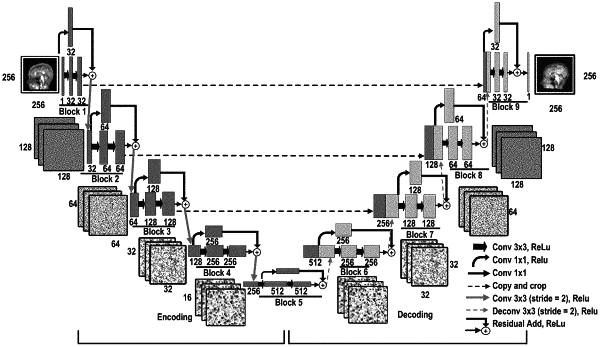| CPC A61B 6/037 (2013.01) [G06T 5/20 (2013.01); G06T 15/00 (2013.01); H04N 19/117 (2014.11); H04N 19/176 (2014.11)] | 18 Claims |

|
1. An image harmonization method for a brain, the method comprising:
providing an original PET image of the brain using an original PET tracer;
providing a target PET tracer; and
converting, using a deep learning neural network, the original PET image into a target PET image simulating an image that would be obtained had the target PET tracer been used,
wherein the deep learning neural network comprises a U-Net-like architecture,
wherein the deep learning neural network comprises at least one residual block,
wherein the at least one residual block comprises one or more encoding blocks and one or more decoding blocks, and
wherein each encoding block receives a first input matrix, and each encoding block comprises:
a first convolutional path comprising:
a first convolutional layer comprising a first kernel and a first filter bank, wherein the first convolutional layer receives the first input matrix and generates a first output matrix, and
a second convolutional layer comprising a second kernel and a second filter bank, wherein the second convolutional layer receives the first output matrix as an input and generates a second output matrix; and
a second convolutional path comprising a third kernel, wherein the second convolutional path comprises a third filter bank and generates a third output matrix,
wherein each encoding block (i) sums together the second output matrix and the third output matrix resulting in a first summed matrix, (ii) down-samples the first summed matrix, and (iii) generates a fourth output matrix.
|